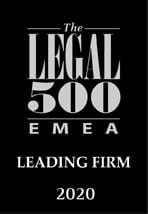New regulatory procedures in the construction industry
Simplified notification now a regulatory procedure for more matters, occupancy certification transformed and the rules of regularisation relaxed
In our series on the recent introduction of new construction legislation, we provide an overview of the new legislative and regulatory environment for the construction industry that has emerged when most of the rules in Act C of 2023 on Hungarian Architecture (“HAA”) took effect on 1 October 2024. The previous, fourth article of the series described certain mandatory terms for construction contracts, new rules for construction trustee arrangements and key changes in contractors’ mandatory liability insurance. This article takes a closer look at key changes in certain regulatory procedures, including the simplified notification, the occupancy certification and the regularisation procedure.
1. Changes in regulatory procedures
[1] In addition to the HAA, Government Decree No. 281/2024 (IX. 30.) on regulatory procedures and inspections in the construction industry (“new Procedures Code”) also took effect on 1 October 2024. The new Procedures Code has repealed Government Decree No. 312/2012. (XI. 8.) on regulatory procedures, inspections and services in the construction industry (“old Procedures Code”) and Government Decree No. 155/2016. (VI. 13.) on the simplified notification of residential buildings while taking over many of their rules. In addition to changes in formalities, there are many substantial regulatory modifications, some of them in HAA and others in the new Procedures Code. This article focuses on key changes in the simplified notification, occupancy certification and regularisation procedures.
[2] Section 162(2) of the HAA has transformed the system of regulatory procedures that were listed in Section 34(2) of Act LXXVII of 1997 on the Development and Protection of the Built Environment (“Construction Act”): there are fewer procedures in order to reduce red tape, and only those remain that are indispensable for ensuring that construction activities are performed lawfully and in good quality. An important new development is that simplified notification now qualifies as a regulatory procedure under the HAA.
[3] The following table summarises the key changes in regulatory procedures:
| Regulatory procedures under the Construction Act | Regulatory procedures under the HAA |
| building permission | building permission |
| simplified notification | |
| combined permission | |
| combined installation | |
| regularisation | regularisation |
| occupancy permission | occupancy certification |
| occupancy acknowledgement | |
| demolition permission | demolition permission |
| permit validity extension | |
| acknowledgement of legal succession | |
| approval for deviation from national building requirements | |
| regulatory certification | regulatory certification |
| mandated actions | |
| trade-specific | |
| acknowledgment of construction activities necessitated by emergencies, coordinated defence activities and crises of mass immigration | acknowledgment of construction activities necessitated by emergencies, coordinated defence activities and crises of mass immigration |
1.1 Activities subject to a building permit
[4] The new Procedures Code has brought about major changes in connection with activities that require a building permit. The old Procedures Code defined these by listing the construction activities that did not require a building permit. The new Procedures Code has changed this approach and instead of using negative categorisation, it specifically lists the construction activities that are subject to a building permit.
[5] With the exception of construction activities that can be performed with simplified notification, a building permit is required for 12 activities under the new Procedures Code, including without limitation:
(1) the construction of a new building if it has a useful area of more than 35 sqm, or if it is higher than 4.5 metres at the roofline in the case of a pitched roof or 3.5 metres at the parapet in the case of a flat roof, not including greenhouses used for the growing of plants, polytunnels used for the growing of plants or mushrooms, and site offices,
(2) the extension of an existing building, if the resulting building has greater dimensions than the limits specified in point a), not including greenhouses used for the growing of plants, polytunnels used for the growing of plants or mushrooms and site offices, or an extension that only affects the footprint area of the building and has no impact on its useful area,
(3) any construction activity performed on a terraced or semi-detached house that has an impact on the walls, foundations or roof of an adjoining building,
(4) the construction of a retaining wall, if it has a height of more than 1.5 metres from the ground level.
2. Simplified notification
[6] As noted above, simplified notification was not a regulatory procedure before 1 October. The rules pertaining to construction activities subject to simplified notification were included in Section 33/A of the Construction Act and in Government Decree No. 155/2016. (VI. 13.). Now the rules of the simplified notification procedure as a regulatory procedure are included in Chapters IV and V of the new Procedures Code.
[7] The scope of the procedure has been narrowed down somewhat: now a residential building with a useful area of not more than 300 sqm may only be built on the basis of a simplified notification if the building only serves a residential purpose and only includes premises that serve that purpose, and if its construction does not require the strengthening of the foundations of an adjoining terraced or semi-detached house. These conditions were not part of the previous rules.
[8] However, certain new activities that can be performed on the basis of a simplified notification have also been added, including:
(1) the construction or extension of an annexe or outbuilding serving a residential building, if the annexe or outbuilding meets the parameters stated in the new Procedures Code – but it may not have a useful area of more than 60 sqm;
(2) a construction activity that is different from a notified activity and changes the footprint area of the building;
(3) a construction activity that changes the height of a building;
(4) a construction activity that changes the location of a building withing the plot; including an activity involving structural work that is necessary to complete a building that is unfit for occupancy and has an expired simplified notification.
[9] Under the new Procedures Code, employers may also decide to obtain a building permit for construction activities that would otherwise need simplified notification.
[10] Under the new rules, the competent building authority is understood to have acknowledged the notification with implied consent if it does not prohibit the employer within the applicable deadline from starting or continuing the activity. In that case, the activity can start after the 20th business day following the receipt of the notification.
[11] In another new development, the new Procedures Code states that building authorities carry out substantial inspections in simplified notification procedures that concern new residential buildings and check whether the plans and designs meet the relevant building rules and regulations. According to the official commentary to the HHA and the new Procedures Code, these rules, just as the completion of the procedure with the authority’s acknowledgment, is designed to strengthen legal certainty for employers. In a notification concerning the extension of an existing residential building, the authorities will only check the existence of the required appendices.
3. Occupancy certification
[12] The formerly separate occupancy permission and acknowledgement procedures have been merged into a single procedure under the new rules. In contrast with Section 44(1) of the Construction Act, employers no longer have to decide which application they should submit, i.e. whether they can occupy buildings on the basis of an occupancy permission or an occupancy acknowledgement procedure. Under the new rules, the competent authority is responsible for making that decision, because the new Procedures Code specifies the type of a the decision that concludes such procedures.
[13] Section 37(1) states that if cooperation from another authority or the analysis of a specialist issue is required in an occupancy certification procedure, the competent authority will issue a resolution to certify occupancy or deny the certification. If the involvement of another authority or the analysis of a specialist issue is not required, the authority will acknowledge occupancy by implied consent or issue a resolution to refuse the acknowledgement.
[14] Under Section 40 of the new Procedures Code, the competent building authority will inform the employer about its acknowledgement by implied consent in a notice. If the building authority does not refuse the acknowledgement of, and does not otherwise prohibit, the occupancy of the relevant building within the applicable deadline, the building can be occupied after the 20th business day following the authority’s receipt of the application.
3.1 Designer’s declaration
[15] Under Section 173(5) of the HAA, an application for occupancy certification now must also include the designer’s declaration in the electronic construction log, stating that the building has been built in accordance with the execution documentation that was based on the approved construction documentation or, if any alteration was made, it has been built with the designer’s approval and in accordance with the as-built documentation, and that the designer gives its consent to the occupancy of the building.
[16] The detailed rules pertaining to such designer’s declarations are included in Section 10 of Government Decree No. 191/2009 on Construction Activities (hereinafter: “Construction Decree”). The designer’s declaration is necessary in the case of a building or part of a building (not including nuclear facilities) that (i) is subject to a building permit or simplified notification, (ii) serves a public purpose, or (iii) is subject to an opinion by the National Architectural Board.
[17] The HAA also addresses the scenario where the designer’s consent has to obtained otherwise. If the designer does not make the declaration within 15 days after the employer’s request plus within an additional deadline of three days granted in a notice sent to the designer by the relevant regional chamber of architects, the declaration will be issued by the regional chamber of architects in a public administration procedure and a disciplinary procedure will be conducted against the designer. If the designer cannot issue the declaration due to their death or dissolution, it will also be issued by the regional chamber of architects in a public administration procedure.
[18] If the designer issues a declaration but denies their consent in the occupancy certification process, the employer may seek remedy from the regional chamber of architects under the HAA. The regional chamber of architects will review the declaration in a public administration procedure and either uphold the denial or grant the consent. If the regional chamber of architects finds that the designer denied the consent without a good cause, it will initiate a disciplinary procedure against the designer. A decision made by a regional chamber of architects may be challenged with an appeal to the national chamber.
[19] Section 36(2)ia) of the new Procedures Code states that the building authority will check whether the designer’s declaration of consent or, in its absence, the relevant declaration by the competent regional chamber of architects is recorded in the electronic construction log.
3.2 Maintenance log
[20] It is now stated in an act of law that in certain cases specified in the Construction Decree, information and documents related to maintenance, renovation, alteration and extension works will have to be recorded in a maintenance log after a building is occupied. [HAA, Section 173(9), Construction Decree, Section 34]
[21] The rules applicable to maintenance logs have become more stringent starting on 1 October 2024. Will take a closer look at these rules in an upcoming article.
3.3 Phased occupancy of office buildings
[22] In a new development, the occupancy certificate may now be granted for any building that has a total useful area of more than 1,000 sqm and offices as its main function if the building includes work-in-progress office space that represents less than half of the total useful area. [new Procedures Code, Section 41]
[23] In an important exception from the general rules, the occupancy certificate for such buildings may be granted even if the work-in-progress areas designed to function as office space are not fit for the purpose intended in terms of the partition of space, and the installation and fitting of walls, floor coverings and restrooms. This simplification allows to the fitout of offices to be performed later, even by the tenants.
[24] In order to qualify for occupancy certification under this rule, (i) the connection points to mechanical, electrical and plumbing systems must be installed in the work-in-progress areas, and (ii) such areas must be safely and physically cordoned off from the users of the building. The declaration made by the designer under Section 14 of the Construction Decree will have to address compliance with these conditions as well.
[25] The new Procedures Code also states that the occupancy certificate issued for an office building on the basis of this exception will include a note that work-in-progress areas must be fit out so that they are fit for purpose before they are occupied.
4. Regularisation
[26] Section 177 of the HAA has modified the previous regulations, and it states that a building authority may, at the employer’s or the owner’s request, regularise a building that was built unlawfully, with the omission of the phrase “or not in a workmanlike manner”, which was included in the Construction Act.
[27] Additionally the new Procedures Code has introduced certain tolerance margins in connection with unlawful construction activities. Therefore, under Section 16(10) of the new Procedures Code, it does not qualify as an unlawful construction activity if the variance from the specifications in the construction documentation attached to the building permit or the simplified notification is less than
(1) 1% of the footprint area of the building, and in no event more than 2.00 sqm,
(2) 1% if the height of the building, and in no event more than 0.2 metres,
(3) 0.1 metre from its shown location in the site plan.
[28] The rules have been relaxed, since regularisation now only has to be requested for buildings younger than 10 years. As for buildings older than that, Section 177(13) of the HAA states that a regulatory certificate will be sufficient, and no fine will be imposed.
[29] In the procedure concerning the issue of such a regulatory certificate, the building authority will examine compliance with
(1) requirements stated in the local building regulations or, in their absence, in the general zoning and building regulations with respect to
i) the maximum permitted building coverage ratio,
ii) the number and function of the buildings and annexes that can built on the plot,
iii) the building plot,
iv) the maximum permitted height of the building, and
(2) with requirements pertaining to the location and durability of doors and windows.
[30] No regularisation will have to requested for buildings or parts of buildings that were built within the 10-year deadline, if they could be built without the need for a building permit or simplified notification at the time when the authorities learned about their unlawful construction. Additionally, the judgment of whether a building was built in a workmanlike manner will be made on the basis of the more advantageous of the national construction requirements and the local building regulations that are in effect at the time when the authorities learn about the unlawful construction of the building. Building authorities will issue a regulatory certificate in line with the new Procedures Code for buildings that meet these criteria, without the imposition of a fine.
Authors: Zsanett Szabó and Evelin Varga




